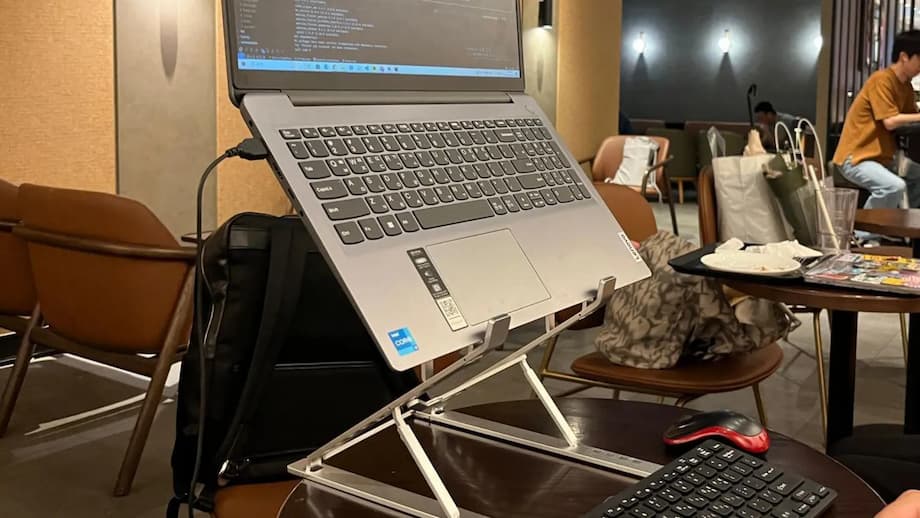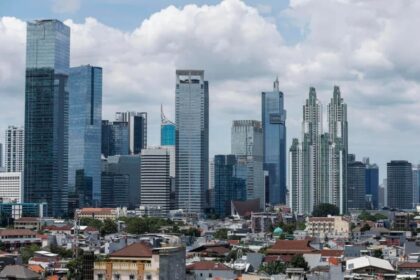South Korea’s Cafes: From Coffee Havens to Study Halls
In the heart of Seoul’s affluent Daechi neighborhood, cafe owner Hyun Sung-joo faces a dilemma familiar to many in South Korea’s bustling urban centers. His coffee shop, like thousands of others across the country, is regularly visited by Cagongjok—a term blending the Korean words for cafe (ca), study (gongbu), and tribe (jok). These are mostly young people who transform cafes into makeshift study halls or offices, sometimes for an entire day, often with little more than a single cup of coffee to justify their extended stay.
- South Korea’s Cafes: From Coffee Havens to Study Halls
- What Is Cagongjok? Understanding the Study Tribe
- The Cafe Boom: Coffee, Competition, and the Rise of the Study Hall
- Starbucks and the Corporate Response: Drawing the Line
- Independent Cafes: Striking Their Own Balance
- The Broader Social Context: Competition, Comfort, and Community
- Challenges for Cafe Owners: Economics and Etiquette
- Seeking Solutions: Inclusivity, Guidelines, and the Future of Cafe Culture
- In Summary
The phenomenon is so widespread that it has sparked a national debate about the role of cafes in Korean society, the pressures facing young people, and the limits of hospitality in a country with nearly 100,000 coffee shops. As the lines blur between leisure, work, and study, South Korea’s cafe culture is undergoing a transformation that reveals much about the country’s social fabric—and its growing pains.
What Is Cagongjok? Understanding the Study Tribe
The term Cagongjok directly translates to “cafe-study tribe.” It refers to individuals—predominantly students and young professionals—who spend hours, sometimes the entire day, studying or working in cafes. Unlike the Western image of cafes as places for quick coffee breaks or socializing, South Korean cafes have become de facto libraries and co-working spaces.
It’s not uncommon to see customers occupying tables meant for four, surrounded by laptops, textbooks, and even printers or desktop monitors. Some bring extension cords and power strips, creating elaborate workstations that rival small offices. This trend is especially pronounced in neighborhoods dense with students and office workers, such as Seoul’s Gangnam and Daechi districts.
Why Do So Many Koreans Study in Cafes?
Several factors have fueled the rise of Cagongjok:
- Academic Pressure: South Korea’s education system is famously competitive. Students face intense pressure to excel in school, pass university entrance exams, and secure good jobs. For many, the home environment is too distracting or cramped for focused study.
- Housing and Space Constraints: Urban housing in Korea is often small, with limited space for quiet study or work. Cafes offer a comfortable, climate-controlled alternative.
- Lack of Public Study Spaces: Public libraries and study rooms are often crowded or have limited hours. Cafes fill the gap, providing accessible spaces with Wi-Fi, power outlets, and refreshments.
- Social and Psychological Comfort: For young people living alone or seeking a sense of community, cafes provide a unique blend of solitude and social ambiance. As one graduate student described, “In the presence of others, I can create my own enclosed space for studying, but I don’t feel alone.”
According to a 2021 survey, 29% of respondents had engaged in solitary tasks at cafes in the past year, with 60% of those in their 20s participating in the Cagongjok experience. A more recent poll found that 70% of Gen Z job seekers study in cafes at least once a week.
The Cafe Boom: Coffee, Competition, and the Rise of the Study Hall
South Korea’s passion for coffee rivals that of traditional cafe cultures like Italy and France. The number of coffee shops in the country has exploded, rising from about 51,500 in 2015 to over 100,000 by 2024. This boom is driven not just by a love of coffee, but by the demand for spaces to study, work, and socialize outside the home.
Major chains like Starbucks have capitalized on this trend, opening more than 2,000 outlets nationwide—making South Korea Starbucks’ third-largest market after the US and China. The proliferation of cafes has made them a fixture of daily life, especially for students and young professionals navigating the pressures of modern Korean society.
But as more people turn to cafes for extended study or work sessions, tensions have begun to simmer between cafe owners and the Cagongjok. The economics of running a cafe are unforgiving: high rents, rising utility costs, and the need for steady customer turnover mean that a single coffee purchase cannot justify hours of seat occupancy. According to the Korea Food Service Industry Research Institute, a 4,100 won (about $3) coffee covers only about 1 hour and 31 minutes of seat time before it becomes unprofitable for the business.
Some cafe owners have responded by blocking off power outlets, introducing time limits, or designating “No Study Zones.” Others, like Hyun Sung-joo, try to strike a balance, welcoming considerate Cagongjok while discouraging extreme cases.
Starbucks and the Corporate Response: Drawing the Line
The issue reached a tipping point in 2024 when Starbucks Korea announced new nationwide guidelines aimed at curbing the most disruptive behaviors. The company posted notices in every branch, banning the use of desktop computers, printers, large power strips, and desk partitions. Customers are also asked to take their belongings with them when leaving for long periods and to make room at shared tables for others.
A Starbucks Korea spokesperson explained the rationale:
“Starbucks Korea has updated its policy so all customers can have a pleasant and accessible store experience. While laptops and smaller personal devices are welcome, customers are asked to refrain from bringing desktop computers, printers, or other bulky items that may limit seating and impact the shared space.”
The policy does not impose time limits on customers, nor does it ban laptops or ordinary study sessions. Instead, it targets the small but persistent group of Cagongjok who transform cafes into full-scale offices, sometimes to the detriment of other patrons.
Photos of elaborate setups—printers perched on chairs, partitions turning tables into private booths—have circulated widely on Korean social media, fueling public debate. Some cafe owners have gone so far as to label these customers “electricity thieves,” frustrated by the minimal purchases and extended stays that cut into profits.
Public Reaction: Applause, Criticism, and the Search for Balance
Reactions to Starbucks’ new policy have been mixed. Many customers welcome the move as a necessary step to restore the traditional cafe atmosphere, making it easier for people to relax, converse, or find a seat. Others see it as an overreach, arguing that cafes should remain flexible spaces for study and work, especially given the lack of alternatives.
On Korean social media, the debate is lively. One user commented, “Good job. Now that Starbucks has started, other cafes should follow suit.” Another lamented, “People working from cafes made me stop going to Starbucks. The announcement is a measure against those who’ve crossed the line with their bad manners.”
Yet, some Cagongjok defend their habits, citing the comfort, safety, and productivity they find in cafes. For many, especially those living in small apartments or shared housing, cafes are the only viable option for focused work or study.
Independent Cafes: Striking Their Own Balance
While major chains like Starbucks have the resources to implement and enforce new policies, independent cafes face a more complicated calculus. Some, like Hyun Sung-joo’s shop in Daechi, tolerate Cagongjok as long as they are considerate and make reasonable purchases. Others have introduced stricter measures, such as:
- “No Study Zone” signs, limiting study time to two hours or banning study altogether during peak hours
- Requiring customers to purchase both a drink and a snack
- Blocking access to power outlets or limiting Wi-Fi usage
These measures reflect the diversity of approaches among cafe owners, each trying to balance the needs of their business with the realities of customer demand. Some cafes even cater specifically to Cagongjok, offering extended hours, ample power outlets, and quiet environments designed for study or remote work.
The Broader Social Context: Competition, Comfort, and Community
The Cagongjok phenomenon is not just about coffee or convenience—it’s a window into the pressures and aspirations of South Korea’s younger generations. The country’s hyper-competitive education system, high youth unemployment, and skyrocketing housing costs have created an environment where young people are constantly seeking ways to get ahead.
Experts like Professor Choi Ra-young of Ansan University see Cagongjok as a product of these social forces. She explains:
“Cagongjok is a cultural phenomenon shaped by South Korea’s competitive society and lack of public spaces for study. Young people are driven to cafes by academic and housing pressures, but also by a desire for comfort and community.”
Cafes offer more than just a place to study—they provide a sense of belonging, a respite from the stresses of daily life, and a space to pursue personal and professional growth. For some, the ambient noise and presence of others help foster creativity and focus, creating a “third space” between home and work.
The trend also reflects broader changes in the nature of work and study. The rise of remote work, flexible schedules, and digital technology has made it easier for people to work from anywhere. Cafes, with their reliable Wi-Fi and welcoming atmosphere, have become the default choice for many.
Challenges for Cafe Owners: Economics and Etiquette
Despite the benefits for customers, the Cagongjok trend poses real challenges for cafe owners. The economics of the business are precarious, with high fixed costs and thin profit margins. Extended stays by customers who make minimal purchases can quickly erode profitability, especially in prime locations with high rents.
Some owners have voiced frustration at being cast as villains for simply trying to keep their businesses afloat. As one cafe owner put it, “We want to welcome everyone, but we also need to pay the bills. It’s not fair when someone occupies a seat all day for the price of one coffee.”
There is also the issue of etiquette. While most Cagongjok are considerate, some leave belongings unattended for long periods, take up multiple seats, or monopolize power outlets. This can create friction with other customers and staff, leading to awkward confrontations or passive-aggressive measures like blocking outlets or posting signs.
Seeking Solutions: Inclusivity, Guidelines, and the Future of Cafe Culture
As the debate continues, experts and stakeholders are calling for more inclusive solutions that balance the needs of all parties. Suggestions include:
- Creating more public study spaces, such as libraries or community centers, to reduce reliance on cafes
- Developing clear guidelines for cafe etiquette, including reasonable time limits and purchase requirements
- Encouraging mutual respect between cafe owners and customers, with an emphasis on consideration and communication
- Designing cafes with different zones for study, work, and socializing, allowing for diverse uses without conflict
Ultimately, the Cagongjok phenomenon reflects the evolving nature of work, study, and social life in South Korea. As the country grapples with the challenges of urbanization, competition, and changing lifestyles, its cafes will continue to serve as both battlegrounds and sanctuaries for a generation in search of space—both literal and metaphorical.
In Summary
- The Cagongjok phenomenon describes young South Koreans who study or work for hours in cafes, often with minimal purchases.
- This trend is driven by academic pressure, housing constraints, and a lack of public study spaces, making cafes a popular alternative.
- The explosive growth of cafes in South Korea has fueled the trend, but also created tensions between cafe owners and long-staying customers.
- Major chains like Starbucks have introduced new policies banning bulky office equipment and encouraging shared use of space, sparking public debate.
- Independent cafes are experimenting with various approaches, from time limits to “No Study Zones,” to balance business needs and customer demand.
- The issue highlights broader social challenges, including competition, youth unemployment, and the search for community and comfort in urban life.
- Experts call for more inclusive spaces and clear guidelines to accommodate diverse uses of cafes without disadvantaging owners or other patrons.












